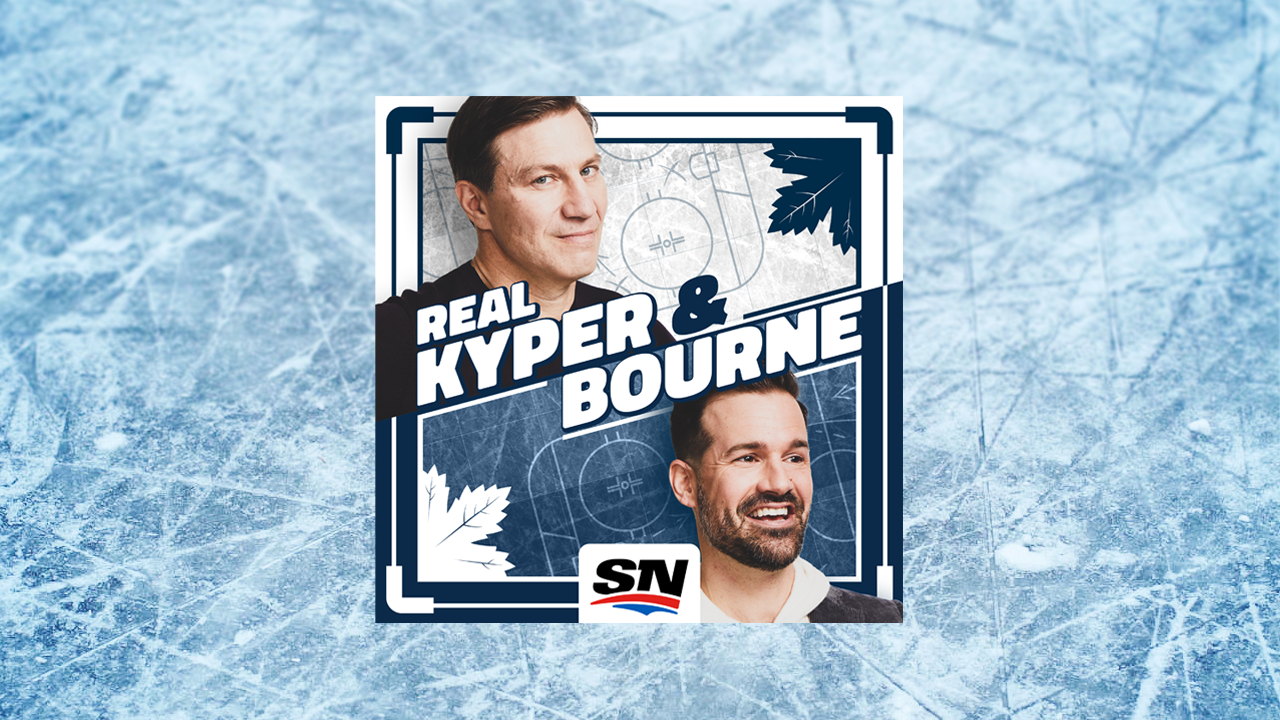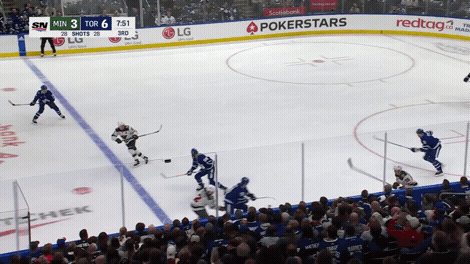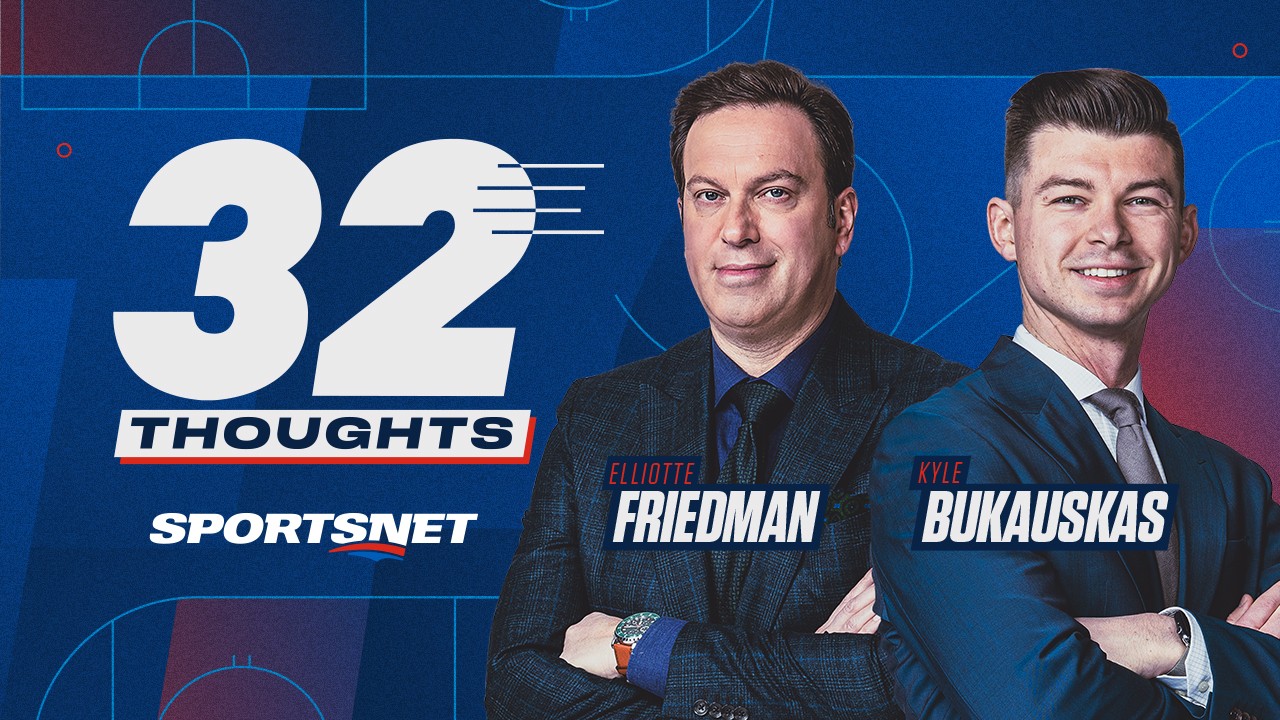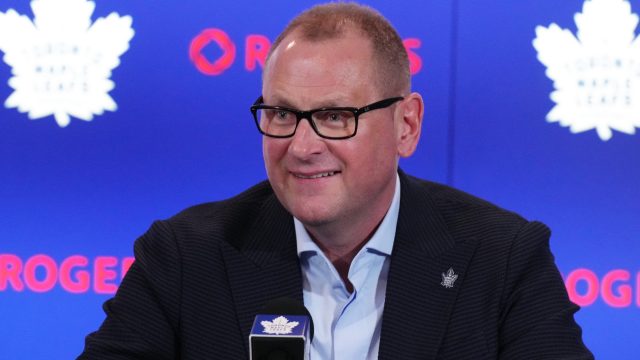Why the Maple Leafs struggle with moving William Nylander to centre
For the second year in a row the Toronto Maple Leafs tried to move William Nylander to centre, and for the second year in a row they bailed on the idea in a week. Justin Bourne explains why.

For the second straight season the Leafs’ brass looked at their roster construction coming out of the off-season and reached a conclusion: if William Nylander just played centre, it would solve a lot of problems.
If he did, it would push John Tavares down to 3C, which would spread out their talent and allow them a chance to construct four lines of depth. The thinking would be that since they’re spending all this money on four forwards, they might as well have them carry the weight for as many lines as possible.
If you’re considering Nylander’s position switch from 30,000 feet, as Brad Treliving and Brendan Shanahan would be, you’d also layer on a few convincers. Nylander played centre growing up and in the AHL, so he has some experience there (heck, he’s played centre in Stanley Cup Playoffs for the Leafs when they’ve needed to shuffle things). He’s also right-handed which could help on draws in the D-zone. He also carries the puck through the neutral zone as well as anyone in the NHL, which is tantalizing.
And so there it is, a decision is made in late September and early October: William Nylander is going to try playing centre this season for the Toronto Maple Leafs.
Then, as if someone dumped cold water on their heads in the midst of a fever dream, the Leafs have bailed on this idea within a week two years in a row.
Why is that? What is it that two coaches have seen, or the GM has seen, or the President has seen, that has made them all say “this works better on paper than on the ice?”
Let’s evaluate the other side to the positives we’ve outlined above of this idea, and consider what’s made the team flip-flop.
There’s a twist to this “cons” side of the list, as it’s not just a collection of “here are things Nylander is bad at.” One of the problems, in fact, is that he’s so good at creating offence from the wing, primarily by leaving the zone early and putting opposing defences on their heels.
So, the second you put Nylander at centre, he’s not going to be the first guy up the rink anymore. Instead, he’ll be skating in traffic and have back-pressure with him. In sum, you’re immediately forfeiting the threat highlighted here, which shows how Nylander gets down the ice and never allows defences to get comfortable:
Nylander is among the NHL’s best at getting behind defenders, ranking fourth in the NHL in breakaways in 2023-24, according to SportLogiq. Aside from the raw goal creation in that, the fear of his speed (and willingness to cheat) has defencemen pull back out of the zone sooner, which creates space underneath for breakouts. This unique skill is part of the reason why the Leafs were second in the NHL in goals last season, part of why Nylander scored 40 times, and it’s tough for a team to give up on.
That’s one problem with moving Nylander to centre, but there are some true negatives as well.
One is that Nylander does have a tendency to give inconsistent efforts defensively (though I’ll note he tries on offence pretty much every night). That’s less of a concern for me in the playoffs when he tends to lock in, but over 82 regular season games you’re going to get some nights where he’s just not quite as focused.
The next is that there are humans at work here, and when you split up Auston Matthews, John Tavares, and William Nylander, ice time allocation becomes a challenge because they all want and deserve a good amount. Nylander’s eyes tend to glaze over if he’s not in the regular flow of things, so to avoid that you’d be asking Tavares to sit more, which is harder than some may think because you’d prefer him to handle the hard defensive zone face-offs over Nylander.
Assuming you’d want Matthews and Mitch Marner to get as many offensive zone starts as possible – and you should – you’re not just changing Nylander’s position, but his deployment too.
And when these guys are spread over three lines, special teams makes a mess of your bench management.
Matthews, Nylander and Tavares are all on PP1, so let’s say they play 90 seconds of a power plat and come off as the final 30 seconds tick down. PP2 is made up of players from lines 1-3 as well, so when it expires you’re left to throw your fourth line over the boards next.
In trying to get a flow for the guys, you then need to get your first line back out, then your second, and then third, but by now we’re talking about three-plus minutes of game clock. In that time there’s almost certainly a TV break, and perhaps more special teams. If it’s a TV break, you might go back to your first line because they’d be rested. The point being, it gets very easy to lose guys in the shuffle from a bench management perspective when these players centre three different lines.
And that doesn’t even cover what happens when there are penalty kills. The simplest phrasing is that it’s easier for the coach when their best players are on two lines. (That’s not to say it can’t be done, it’s just one of the complicating factors to consider.)
The fact is the Leafs would love to have the “who helps us at centre” problem just solve itself in some other way, so they don’t have to sacrifice Nylander’s up-ice offence. You can see how (even though it’s a tough look in retrospect), in an effort to hang on to that offence, a glimpse of hope from a player like Fraser Minten made them semi-desperately go “Maybe this is a better answer?”
I do believe Nylander would be able to play centre in the NHL, and I think there will be times when Craig Berube tries it this season. Like a lot of things with this Leafs team, what they’ve tried so far hasn’t got them where they want to go, so they owe it to themselves to try and see if they can turn something up here. Maybe Nylander would create in new ways from the middle, or maybe they stumble into four great lines.
Maybe it just works.
And maybe it doesn’t.
For now, the only thing that’s clear is nobody’s sure if moving Nylander to centre solves or creates any problems. At some point, the team needs to get those questions answered.














